Research - (2022) Volume 10, Issue 4
Laser Engraved 2D and QR Code on Titanium Plates Denture Markers-An Observational Study
*Correspondence: Deepak Kamalanathan, Department of Prosthodontics, Chettinad Dental College and Research Institute, Chennai, Tamil Nadu, India, Email:
Abstract
Aim: The purpose of this study was to determine the reliability of 2D (Two dimensional) and QR (Quick Response) coded titanium chips in heat cured acrylic blocks after being treated with heat and acid. Materials and Method: 2D and QR codes were generated using patient’s Aadhaar number and laser engraved into 25 titanium chips of 1.5 X 1.5 cm with thickness of 0.3mm. Laser engraved titanium chips with the patient’s information were incorporated into acrylic blocks of 2cm X 2cm with thickness of 5cm. These acrylic resin blocks were categorized into five groups: I, II, III, IV, and V. Each group contain 5 acrylic blocks, in which first three groups were subjected to various heat treatments in electrical furnace at temperature 350° C, 500°C, and 750°C and last two groups were treated with strong acid like 40% hydrochloric acid and 99% sulfuric acid for an hour. After heat and acid treatments, these 2D and QR codes were scanned using smart phones to extract the patient’s information. Ethics: The Institutional Human Ethics Committee (CARE IHEC-II) has reviewed your proposal titled “Laser engraved 2d and qr code on titanium plates–denture markers-an observational study” on 23.12.2021. Ref No: IHEC-II/0135/21. Results: In Group I there was mild distortions of acrylic blocks with any loss in reliability of QR code. In Group II and III QR codes were readable but the acrylic blocks were destroyed. In Group IV and V there were no losses in readability of QR code. Conclusion: Within the study's limitations, it indicates that 2D and QR coded titanium plate denture markers are reliable under heat (750°C) and acid treatment. Thus, in forensic odontology, 2D and QR coded titanium plates are a more reliable and simplest method of denture marking and identification.Keywords
Titanium chips, Smart phones, Institutional human ethics committee, Denture, Odontology
Introduction
Forensic dentistry is one of dentistry's most cuttingedge and rapidly evolving fields.1After major disaster or natural calamities, identifying the deceased and injured is of utmost important. In those circumstances, using dental records to identify people has proven to be a useful tool [1]. whereas in edentulous patient with no teeth, it is very difficult to identify, hence the process of identification of edentulous patient is made possible by marking the denture. In forensic dentistry and prosthodontics, the concept of labeling or denture marking is not new. It is one of the long-standing recommendations of forensic dentists around the world. Richmond et al (2006) stated that denture marking should give a positive identification, resistant to heat and fire, techniques should be easy, quick, and cost effective and it should not have an impact on the denture base material's durability. Above all it should not compromise patient’s esthetics [1]. Prosthodontics in forensic dentistry play a critical role as they are responsible for various prostheses fabrication which can be used as scientific proof in recognition of person during major disaster and natural calamities [2].
Several surface marking and inclusion techniques have been reported in literature. These techniques, on the other hand, are costly, time-consuming and ineffective for the incorporation of a large amount of data [3]. Denture markings are most commonly done using the surface and inclusion methods [4]. In surface marking method, surface of the denture is serrated, engraved or written. Disadvantage of surface marking is that they create irregularities on the prosthesis's surface, which can hold microorganisms or food debris [5]. If the surface marking is done on the intaglio surface there is evidence associated with malignancy due to constant tissue irritation [6]. Markings are made within the denture base material in the inclusion technique. Various inclusion techniques are incorporation of Laminated or parchment paper [7], label [8], stainless steel strip [9], lenticular card [10], laser etching [11], radio frequency identification tags [12] or lead foil [13] with patient information. They can be incorporated in the heat cured denture base resin during processing or with transparent auto- polymerizing resin [7].
QR codes are a type of two-dimensional or matrix bar code that can store more data than regular text, making it an excellent tool for denture labeling. Barcode generators are used to read 2D and QR codes and these applications or apps are available in internet or can be downloaded using smartphones. The two-dimensional barcode, which consists of black squares arranged on a white background in a square grid that can be read optically using smart phones, was invented in Japan in 1994 [14]. It can hold up to maximum of 4,296 alphabets and numbers [4]. Titanium is a space-age metal that is strong, lustrous, and corrosion-resistant, with high melting point and its 45% lighter compared to other steel [13]. Major drawbacks of previous studies done on denture marking is that denture marking was reliable up to 370 ºCelsius but were destroyed when subjected to 500ºCelsius [15]. To overcome these drawbacks this study was done with laser etched QR or 2D coded titanium chips with patients Aadhar number incorporated into heat cured acrylic resin.
Material and Methods
Fabrication of titanium chips
Total of 25 titanium chips was milled in the dimension of 1.5*1.5 cm with thickness of 0.3mm (Figure 1).
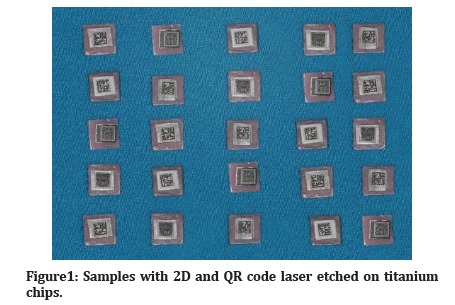
Figure 1: Samples with 2D and QR code laser etched on titanium chips.
Generation of QR codes
Patient’s unique identification number (Aadhaar card) was used to generate QR code. QR code was generated using QR barcode generator software (www.qr.code. generator.com, Egoditor Gmbh, Bielefeld, Germany). Generated QR code was engraved into titanium chips using fiber laser etching (MLS – F20, Meera laser solutions, Chennai).
Incorporation of QR code into acrylic blocks
Acrylic blocks (Dental Products of India, Mumbai) with dimensions of 2cm*2cm with thickness of 5mm were fabricated with QR coded titanium chips, which was incorporated in the middle of the acrylic block and processed. Acrylic blocks were finished and polished. Acrylic blocks with QR coded titanium chips were categorized into 5 groups namely group I, II, III, IV and V with 5 samples in each group depending on the various heat and acid treatment.
Evaluation of sample
Samples were scanned using smart phones to evaluate the reliability of QR codes (Figure 2). After various heat and acid treatment, Acrylic blocks with QR coded titanium chips were subjected to various temperature in electric furnace (Figure 3), Samples in Group I was subjected to heat at 350°C, Group II at 500°C and Group III at 750°C and samples in Group IV was placed in 40% hydrochloric acid and Group V in 99% sulfuric acid (Figure 4) overnight to evaluate the reliability of the QR code (Table 1).
| Group | Treatment |
|---|---|
| I | At 350° Celsius in electric furnace. |
| II | At 500° Celsius in electric furnace. |
| III | At 750° Celsius in electric furnace. |
| IV | Acid treated for an hour-Hydrochloric acid 40% |
| V | Acid treated for an hour-Sulfuric acid 99% |
Table 1: Evaluation of sample. 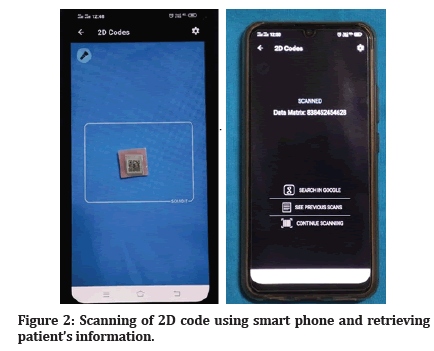
Figure 2:Scanning of 2D code using smart phone and retrieving patient’s information.
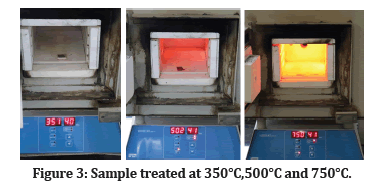
Figure 3:Sample treated at 350°C,500°C and 750°C.
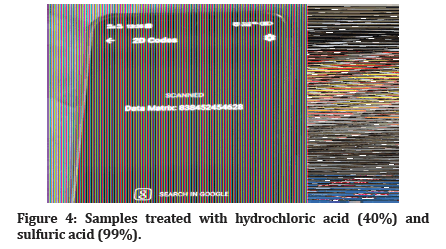
Figure 4:Samples treated with hydrochloric acid (40%) and sulfuric acid (99%).
Results
Statistical analysis was not possible since there are no mathematical measurements. Results showed that in Group I at 350°celcius there were no loss in reliability of QR code with mild distortion of acrylic block (Figure 5). In Group II and III at 500° and 750°celcius respectively and QR code was readable but acrylic blocks was completely burnt (Figure 6). When Group IV and V was treated with hydrochloric acid (40 %) and sulfuric acid (99 %) respectively, showed no loss in QR code readability.
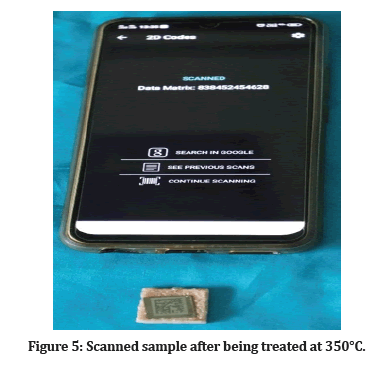
Figure 5:Scanned sample after being treated at 350°C.
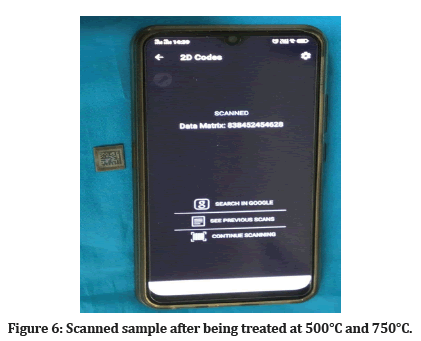
Figure 6:Scanned sample after being treated at 500°C and 750°C.
Discussion
Heat-related disasters on a large scale can sometimes make it difficult to identify victims. As a result, the importance of forensic odontology cannot be overstated. Because teeth, dental prostheses, and restorations can withstand increased temperatures, they can be used as identification aids [16]. Markings of dentures are advantageous as they help in patient’s identification during natural disasters, prosthesis identification in nursing homes for the elderly and regeneration of dental records. In addition to identification of edentulous patient either living or deceased, denture marking also helps us to retrieve information of patient’s dental history [17].
Denture marking or labeling is not a novel concept in prosthetic or forensic dentistry, and many international forensic odontologists have proposed it as standard practice. Surface marking methods are inexpensive and easy to apply but disadvantage of this technique is that it can wear off easily. Inclusion method is relatively more permanent and gives us more predictable results, but disadvantage of this method is that it can weaken the denture and is usually made by a trained professional [3-5].
Present study uses 2D and QR codes as the method of identification in complete denture prosthesis. Studies have shown that denture markers and its technique should be cost effective, contain patient details, not influence the esthetics of the denture, and resistant to high temperature [18,19]. The use of QR code complies all these properties but the only limitation is that it cannot withstand high temperature.13 Up to 370°C, according to Poovannan et al., QR code reading was possible but when exposed to temperatures above 370°C, the codes were burned as they were printed in A4 sheet paper cut in the dimension of 1.3 cm * 1.3cm [15].
In this study titanium is being used as the tool where 2D and QR code with patients Aadhar number was laser etched in titanium chips and incorporated into the denture. Two most useful properties of titanium are that they are corrosion resistant and strong as some steel, but 45% lighter and most importantly it has high melting point (more than 1650°C).13 In India, Aadhaar card number issued by the UIDAI can be used as best identification method to identify a person, as this number is unique to every citizen in India.15 This unique identification number was transferred into QR code using a software. Generated QR code was engraved into titanium chips using fiber laser etching.
The samples were tested using criteria based on the most common injuries and accidents. First criteria taken was high temperature like fire accidents, as it is one of the main causes of mortality and morbidity and identification of the victim in this fire accident is a difficult task. QR code was tested at varying temperature till 750°C as in most fire accidents temperature may raise up to 750°C and above. Sulfuric and hydrochloric acids were chosen because they are common laboratory chemicals with a risk of workplace accidents.
Samples were categorized into five groups with 5 samples in each group. First 3 groups were subjected to high temperature of 350°C, 500°C, and 750°C. The results were positive as we were able to read the QR code using the smart phones even after subjecting the sample to 750°C. Next 2 groups of samples were treated with hydrochloric acid and sulfuric acid, results were positive as there was no distortion in the samples. Samples of Group III were again tested at higher temperature above 900°C since titanium has a higher melting point. When treated at temperatures above 900 degrees Celsius, QR codes were distorted, but the titanium chips were not destroyed (Figure 7).
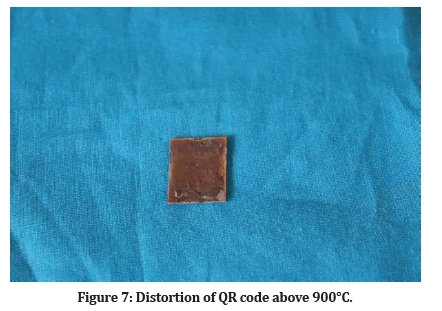
Figure 7:Distortion of QR code above 900°C.
Conclusion
Within the limitation of the study, we conclude that QR code was reliable up to 350°C with mild distortion of acrylic block, at 500°C and 750°C QR code was readable but acrylic blocks were completely burned out and QR code was reliable even after treating them with 99% sulfuric acid and 40% hydrochloric acid.
Clinical Implications
A dentist's primary responsibility is to encourage patients to label their dentures. 2D and QR coded titanium plates can be incorporated in maxillary denture's palatal region and mandibular denture's lingual flange. These incorporations will not affect the functions and esthetics of the denture and it can also be scanned easily using smart phones.
Limitations
QR code was laser engraved at the surface of the titanium chips, which lead to distortion of the code above 900°C. Future study has to be done to make the denture marker readable at temperatures above 900°C.
References
- Richmond R, Pretty IA. Contemporary methods of labeling dental prostheses—A review of the literature. J Forensic Sci 2006; 51:1120-6.
- Jeddy N, Ravi S, Radhika T. Current trends in forensic odontology. J Forensic Dent Sci 2017; 9:115.
- Millet C, Jeannin C. Incorporation of microchips to facilitate denture identification by radio frequency tagging. J Prosthetic Dent 2004; 92:588-90.
- Jiménez RA. Denture Labeling Using QR Codes. A Simplified Technique. Odovtos Int J Dent Sci 2018; 20:11-5.
- Anehosur GV, Acharya AB, Nadiger RK. Usefulness of patient photograph as a marker for identifying denture‐wearers in India. Gerodontol 2010; 27:272-7.
- Datta P, Sood S. The various methods and benefits of denture labeling. J Forensic Dent Sci 2010; 2:53.
- Thomas CJ. The role of the denture in identification: A review. J Forensic odonto-Stomatol 1984; 2:13-6.
- Stavrianos CH, Petalotis N, Metska M, et al. The value of identification marking on dentures. Balkan J Stomatol 2007; 11:212-6.
- Colvenkar SS. Lenticular card: A new method for denture identification. Ind J Dent Res 2010; 21:112.
- Ling BC, Nambiar P, Low KS, et al. Copper vapour laser ID labelling on metal dentures and restorations. J Forensic Odonto-Stomatol 2003; 21:17-22.
- Nuzzolese E, Marcario V, Di Vella G. Incorporation of radio frequency identification tag in dentures to facilitate recognition and forensic human identification. Open Dent J 2010; 4:33.
- Kumar S, Banerjee S, Dwivedi H, et al. Personal identification using complete dentures. Int J Prosthodontics Restorative Dent 2011; 1:132-5.
- Suganya Srinivasan AS, Balasubramanian M, Mony BM, et al. Evaluation of the efficacy of titanium plates as denture markers under various heat sources and pressure-An in vitro study. J Forensic Dent Sci 2015; 7:59.
- Jeng-An Lin, Chiou-Shann Fuh. 2D bar code image decoding. Mathematical problem in Engineering 2013; 13:1-10.
- Poovannan S, Jain AR, Krishnan CJ, et al. An In vitro evaluation of the reliability of QR code denture labeling technique. J Forensic Dent Sci 2016; 8:179.
- Sudheendra US, Sowmya K, Vidhi M, et al. 2D Barcodes: A Novel and Simple Method for Denture Identification. J Forensic Sci 2013; 58:170-2.
- Bali SK, Naqash TA, Abdullah S, Mir S, et al. Denture identification methods: A review. Int J Health Sci Res 2013; 3.
- Pathak C, Pawah S, Sikri A, et al. Unique denture identification system for all Indian nationals. Contemp Clin Dent 2018; 9:S185.
- Olsson T, Thureson P, Borrman H. Denture marking. A study of temperature resistance of different metal bands for ID-marking. J Forensic Odonto Stomatol 1993; 11:37-44.
Indexed at, Google Scholar, Cross Ref
Indexed at, Google Scholar, Cross Ref
Indexed at, Google Scholar, Cross Ref
Indexed at, Google Scholar, Cross Ref
Indexed at, Google Scholar, Cross Ref
Indexed at, Google Scholar, Cross Ref
Indexed at, Google Scholar, Cross Ref
Indexed at, Google Scholar, Cross Ref
Indexed at, Google Scholar, Cross Ref
Author Info
1Department of Prosthodontics, Chettinad Dental College and Research Institute, Chennai, Tamil Nadu, India
Citation: Deepak Kamalanathan, Nancy Monica R, Sridharan R, Laser Engraved 2d and QR Code on Titanium Plates Denture Markers-An Observational Study, J Res Med Dent Sci, 2022, 10 (4):73-77.
Received: 30-Mar-2022, Manuscript No. JRMDS-22-59024; , Pre QC No. JRMDS-22-59024 (PQ); Editor assigned: 01-Apr-2022, Pre QC No. JRMDS-22-59024 (PQ); Reviewed: 15-Apr-2022, QC No. JRMDS-22-59024; Revised: 20-Apr-2022, Manuscript No. JRMDS-22-59024 (R); Published: 27-Apr-2022
